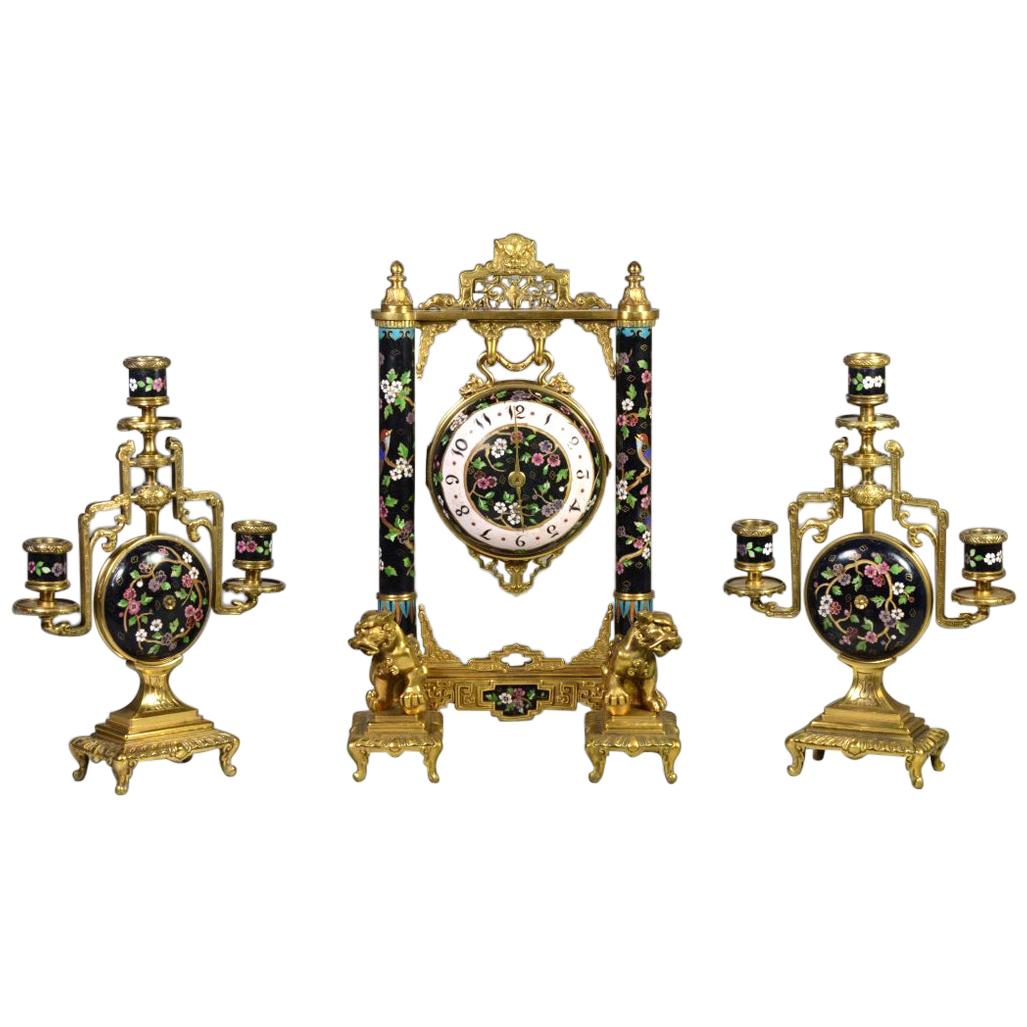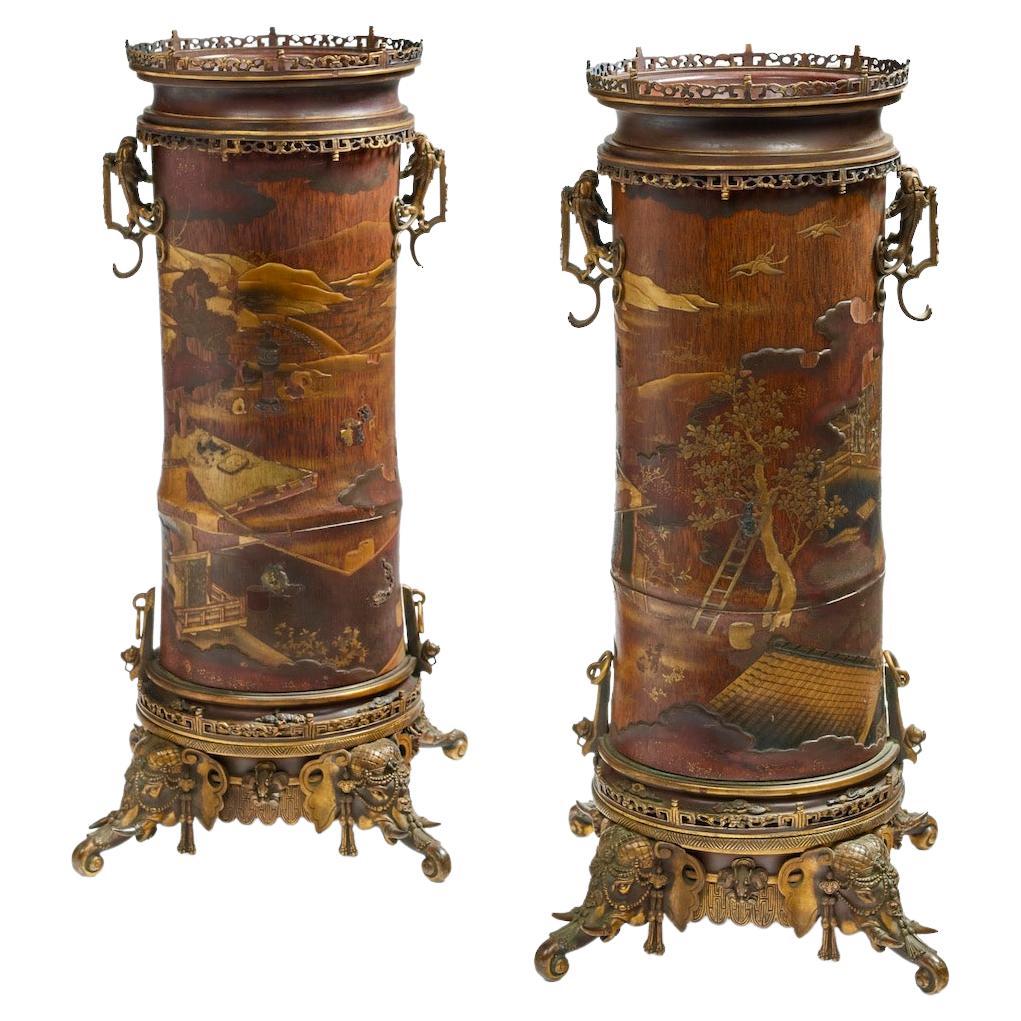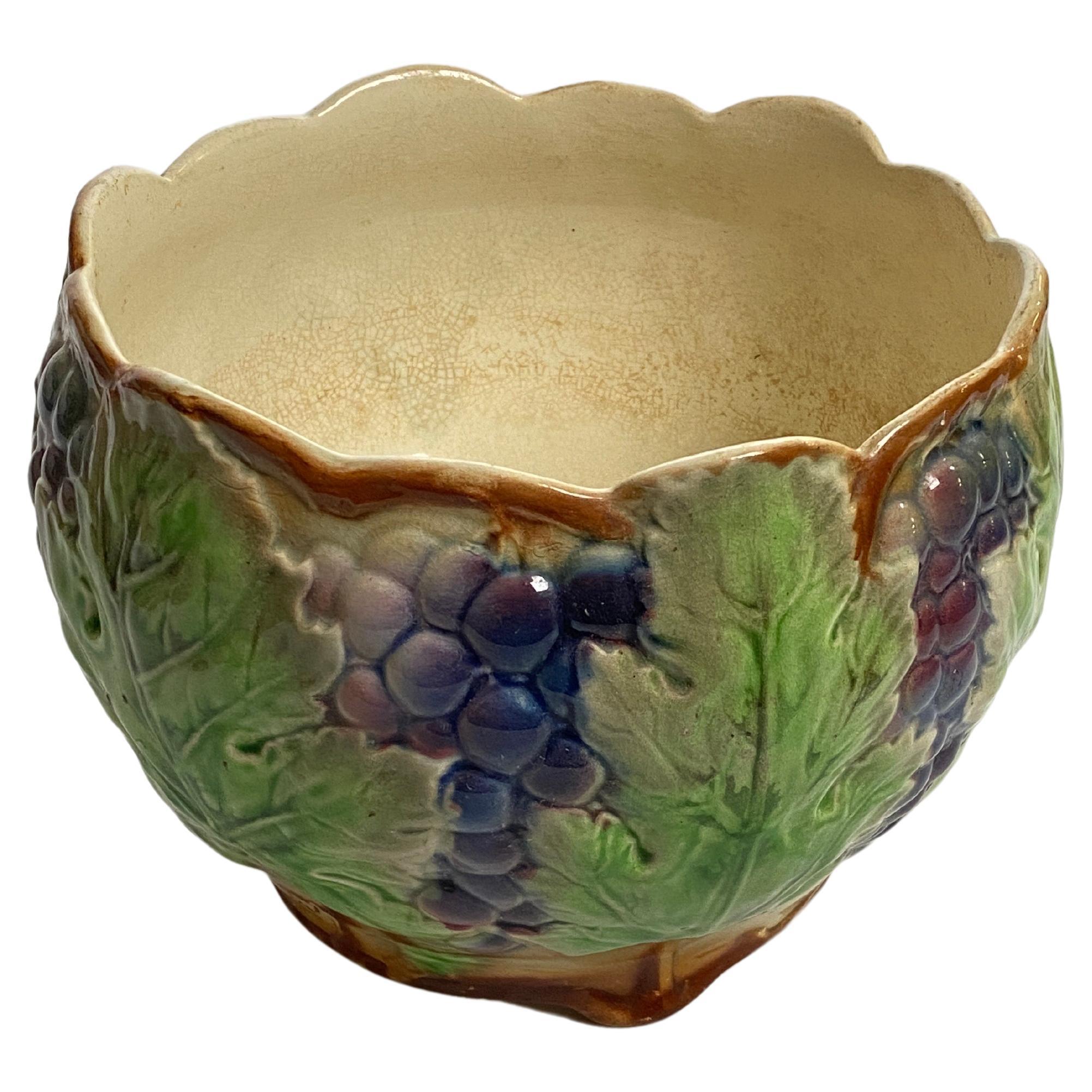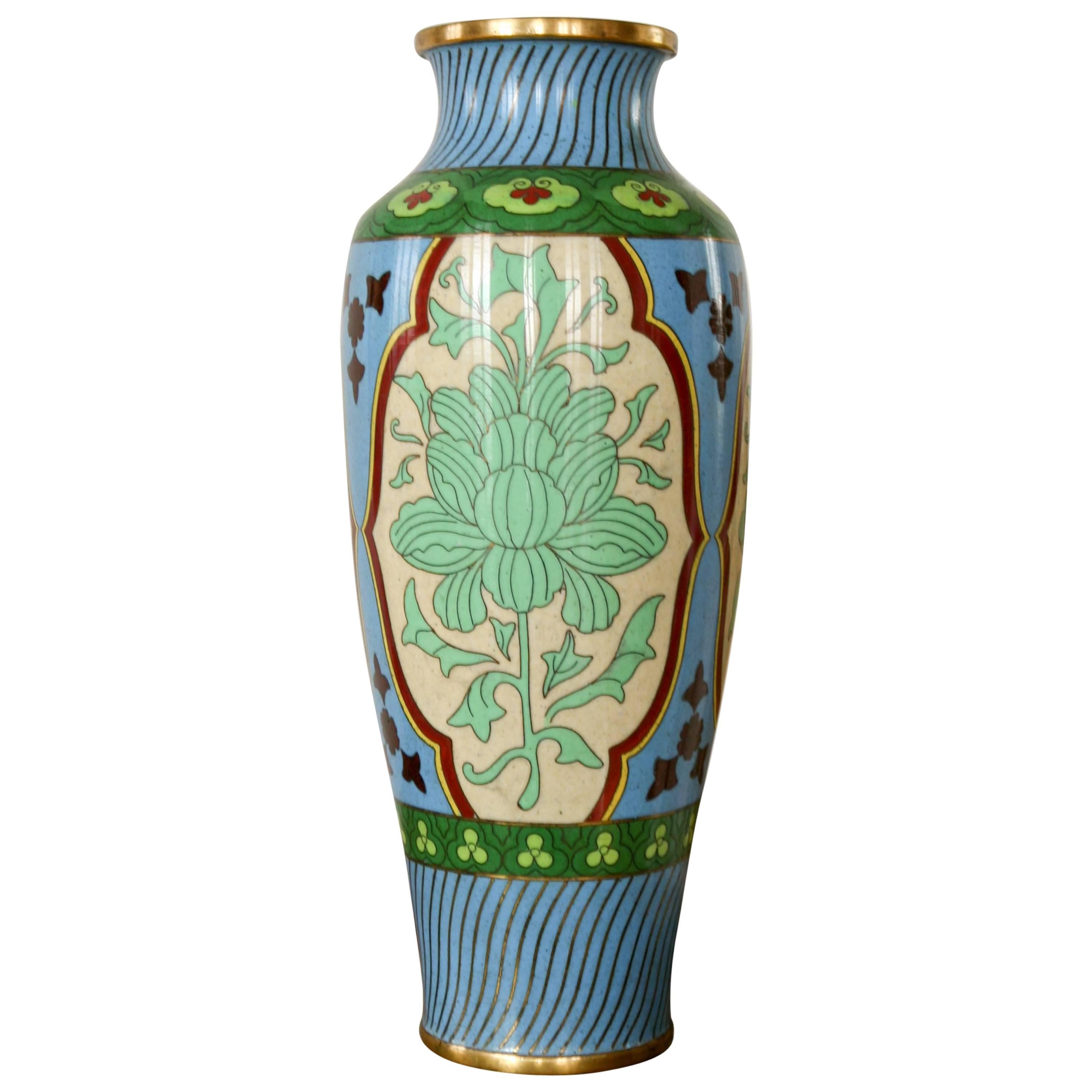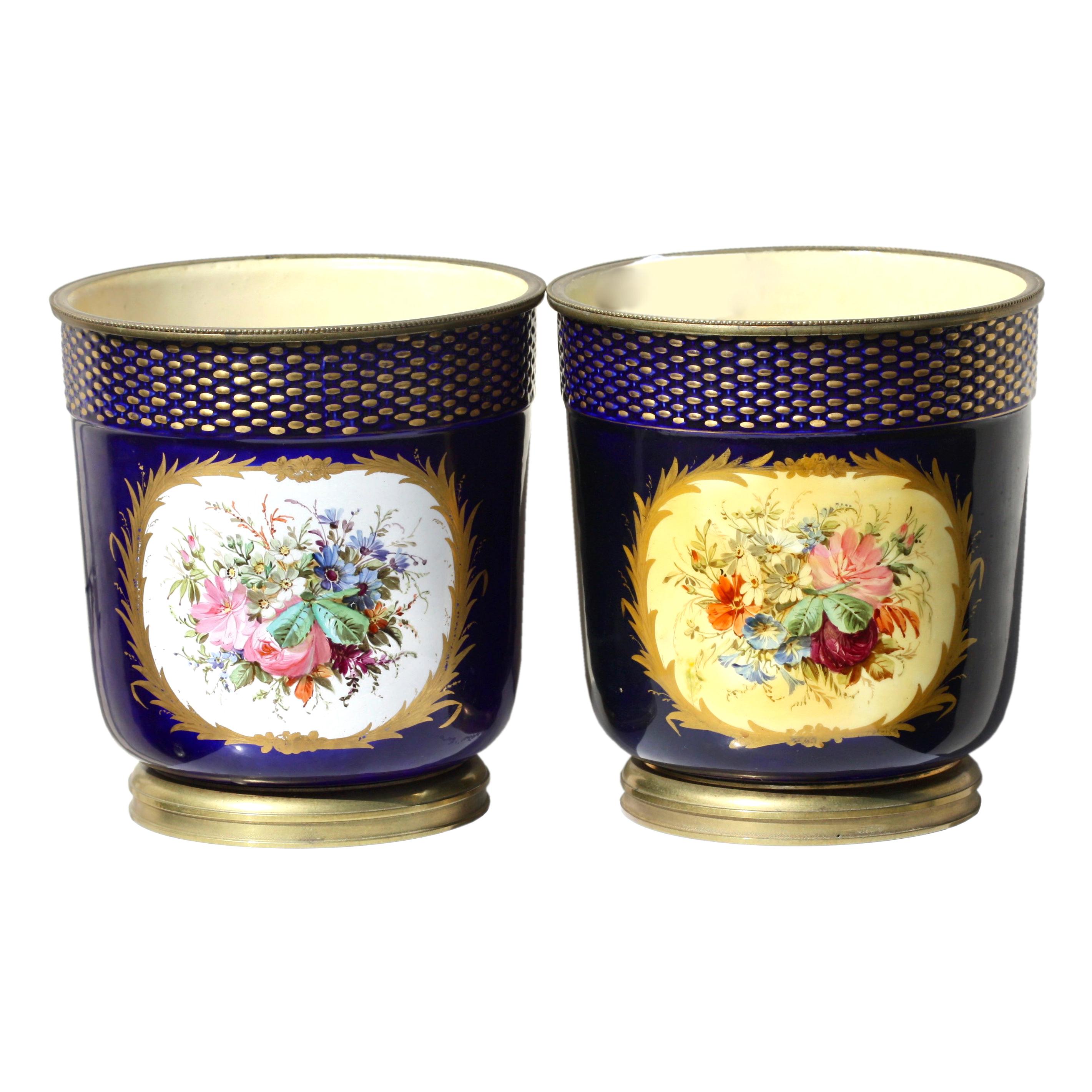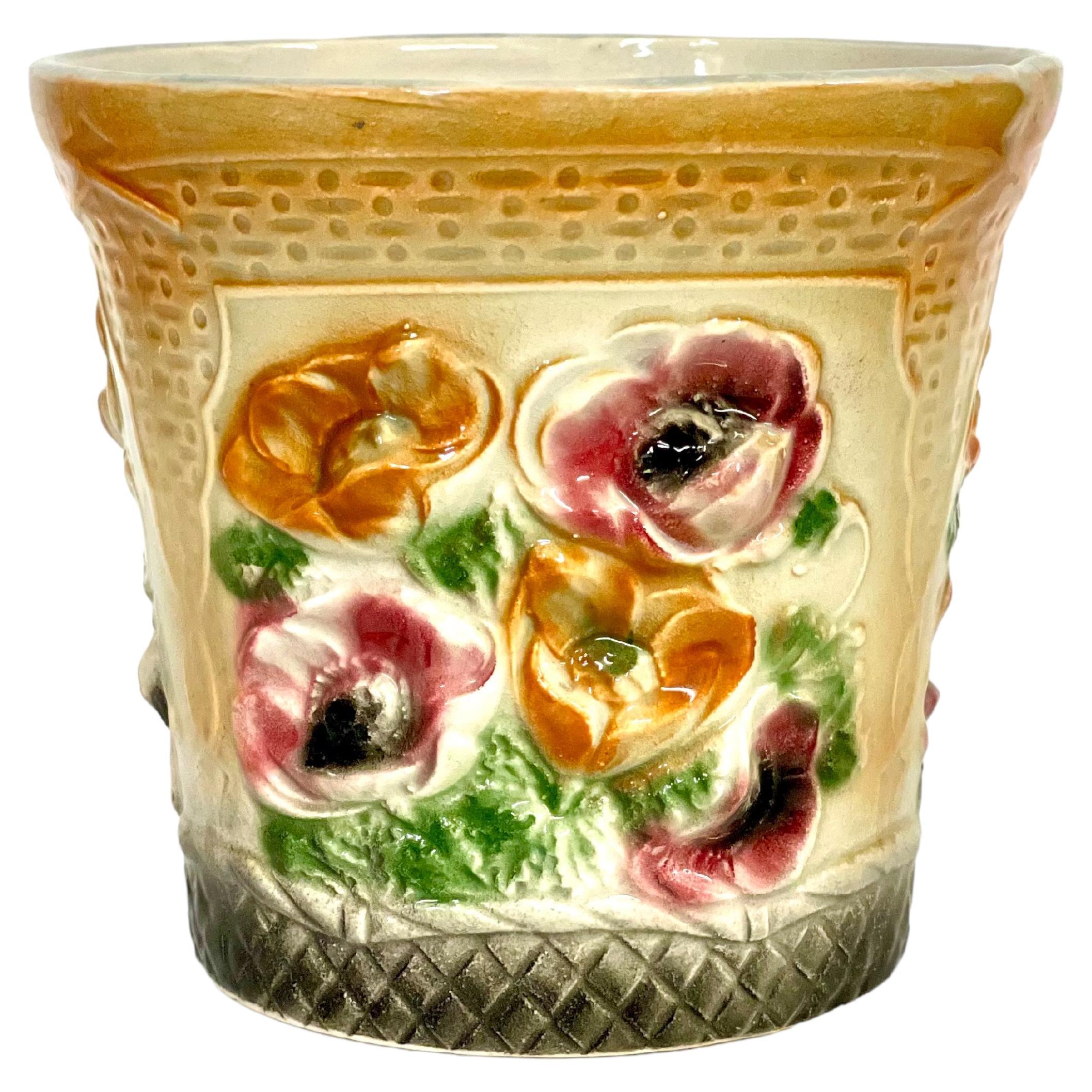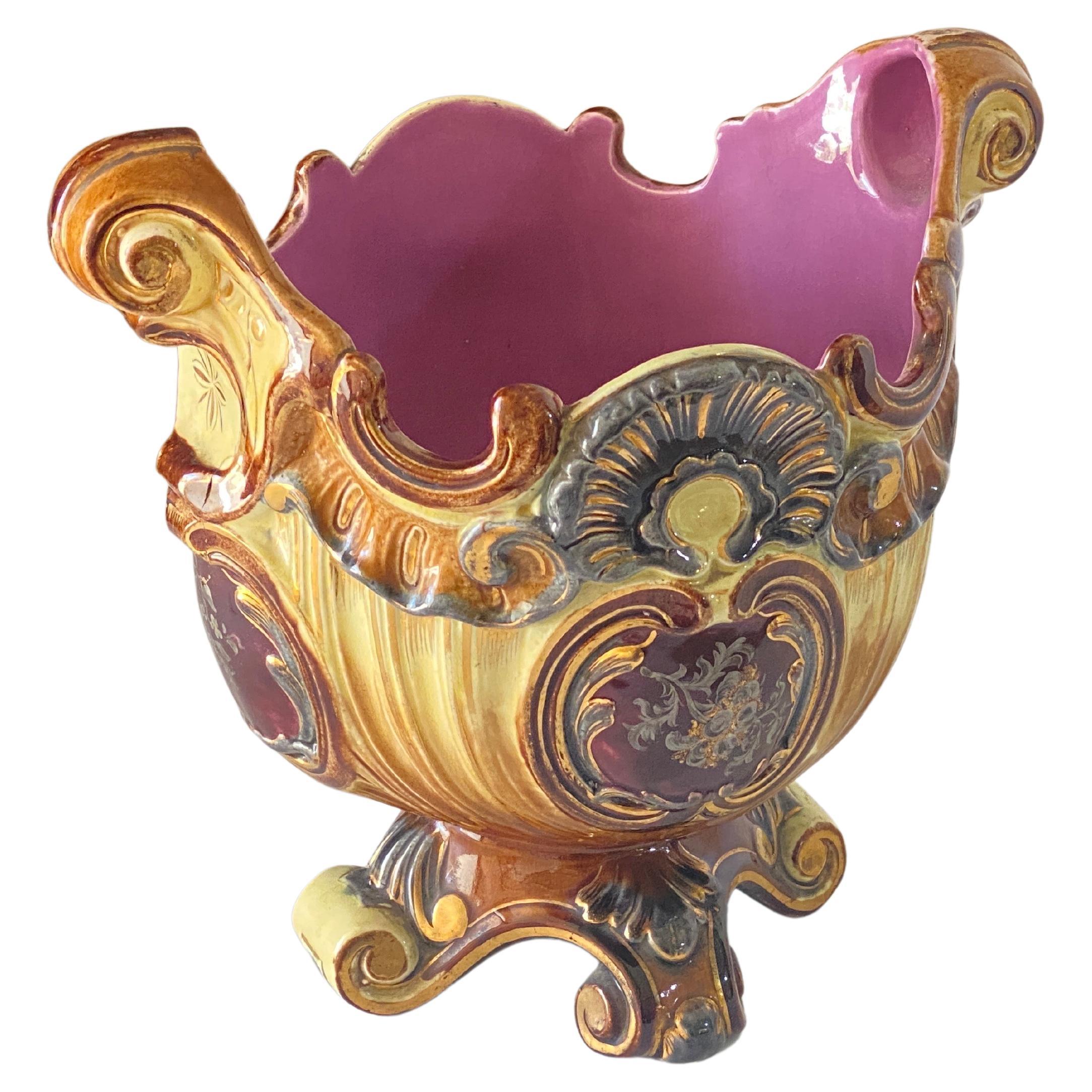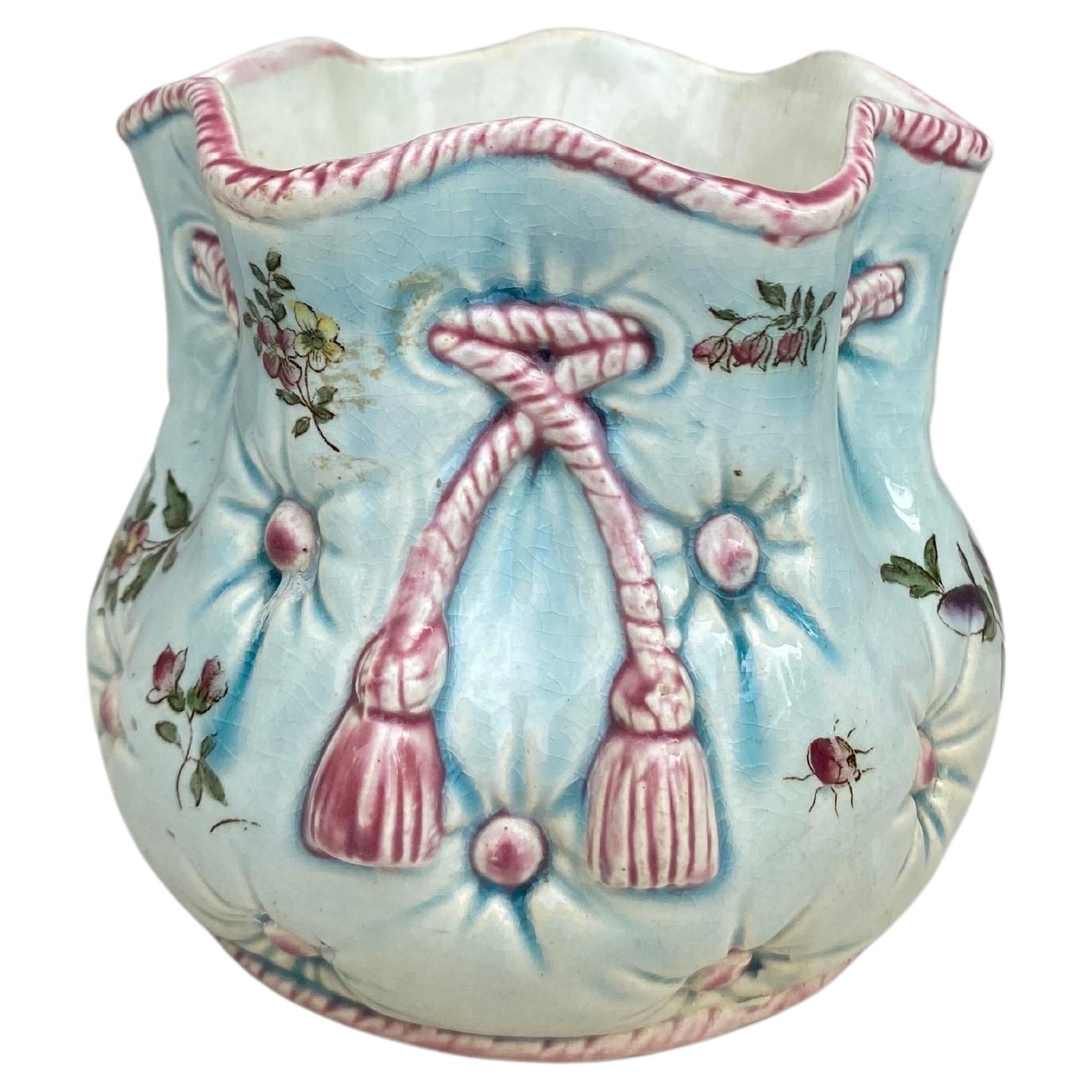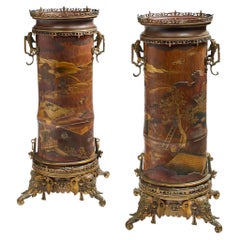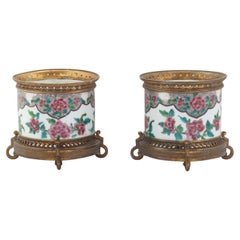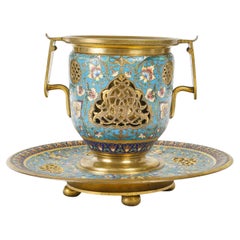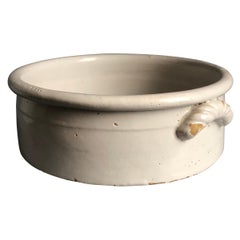
French 19th Century Ormolu and Cloisonné Enamel Japonisme Cache-Pot
View Similar Items
Want more images or videos?
Request additional images or videos from the seller
1 of 18
French 19th Century Ormolu and Cloisonné Enamel Japonisme Cache-Pot
About the Item
- Similar to:Ferdinand Barbedienne (Maker)
- Dimensions:Height: 13.39 in (34 cm)Width: 20.48 in (52 cm)Depth: 15.75 in (40 cm)
- Style:Japonisme (Of the Period)
- Materials and Techniques:
- Place of Origin:
- Period:
- Date of Manufacture:circa 1870
- Condition:Wear consistent with age and use. Minor losses.
- Seller Location:Saint-Ouen, FR
- Reference Number:1stDibs: LU2612310524573
About the Seller
4.9
Vetted Seller
These experienced sellers undergo a comprehensive evaluation by our team of in-house experts.
1stDibs seller since 2017
56 sales on 1stDibs
Typical response time: 1 hour
More From This SellerView All
- French 19th Century Pair of Lacquered Bamboos Japonisme VasesBy Ferdinand Barbedienne, Edouard LievreLocated in Saint-Ouen, FRA 19th French century pair of Lacquered Bamboos Japonisme vases. An amazing pair of tall cylindrical bamboo vases decorated in Japanese Gold and Sil-ver Hiramaki-E Lacquer with Pavilions in The Mist and Weaving Figures, Flown Over by a Pair of Cranes. Enclosed in a Sino-Japanese Inspiration Golden and Brown Patina Bronze Mount Featuring Elephant Heads, Partially Openwork Branches and Salamanders Forming Side Handles. Circa 1870 Attributed to Édouard Lièvre (1828-1886) and Ferdinand Barbedienne (1810-1892) Édouard Lièvre (1828-1886) is one of the most talented and prolific designer and industrialist of the 19th Century, his repertoire is sometimes Sino-Japanese or Neo-Renaissance, whether in furniture or works of art, we can note in particular the parade bed of Valtesse de La Bigne, furniture commissioned by the painter Édouard Detaille or even Sarah Bernhardt, and the famous works in collaboration with Maison Christofle or those in gilded bronze and cloisonné enamel edited by Ferdinand Barbedienne, presented at the Universal Exhibitions in 1878, 1889 and 1900. He was both a draftsman, painter, illustrator, engraver, ornamentalist and cabinetmaker, first trained in the studio of the painter Thomas Couture, Lièvre was then fully immersed in the world of decoration, creation and ornamentation and provides designs for manufacturers and merchant-publishers. Often assisted by his brother Justin, he first produced works of art for his own apartment, seeking out the finest craftsmen to execute his designs for bronzes, ceramics, fabrics and luxury furniture from great virtuosity and great taste. He then collaborated with the cabinet-maker Paul Sormani, as well as haberdasher merchants such as the Escalier de Cristal, bronziers such as Maison Marnyhac and especially Ferdinand Barbedienne as on our vases with bronze mounts characteristics of Edouard Lièvre's work. Born in 1810, died in Paris in 1892, Ferdinand Barbedienne, the most important caster of bronze pieces of art during the second half of the 19th Century, created and directed in Par-is one of the major artistic foundries of his time. Barbedienne specialized in classical reproductions, whose models were exposed in famous European museums. Their illustrated catalogues included many diverse objects such as busts, ornemental sculpture (clocks, candelabras, cups) sometimes even life-sized and bronzes for furniture. Apart from his own produc-tion, Barbedienne worked for the most renowned sculptors such as Barrias, Clésinger and Carrier-Belleuse. All his works were highly esteemed and he, himself honored by contemporary critics. At the London exhibition in 1851 Barbedienne’s firm won two « Council medals ». At the 1855 Universal Exhibition, he won a medal of honor. The success of Barbedienne’s firm brought him many official commissions, such in about 1860, as Barbedienne supplied bronzes for furniture for the Pompeian Villa of Prince Napoléon-Joseph, located avenue Montaigne in Paris. At the London Universal Exhibition of 1862 Barbedienne won medals in three different categories: Furniture, Silversmith work and Artistic bronzes. Barbedienne was made an officer of the Légion d’Honneur in 1867 and Commander in 1878 when he was compared with « a prince of industry and the king of bronze casting ». His glory did not decline with the passage of the time for at the Universal Exhibition of 1889 the critics thanked Barbedienne for the example he set for other bronze-casters by the perfection of his bronzes. “Japonisme” in the second half of the 19th century, was a craze for everything that came from Japan or imitated its style. The word was first coined in a series of articles published by Philippe Burty, from May 1872 to February 1873, in the French magazine “la Renaissance Littéraire et Artistique”. Far from the Academic sphere, artists seeking for new ways of expression, appropriated this discovery. Manet and the impressionists led the way to half a century of enthusiasm for Japanese art, and largely contributed to the esthetical revolution Europe experienced between 1860 and the beginning of the twentieth century. From 1862, The World’s Fairs provoked massive arrivals of fans, kimonos, lacquers, bronzes, silks, prints and books that launched the real era of Japonisme. With those exhibitions, the demand was boosted, the number of merchants and collectors was multiplied, and artists became passionate about this new esthetic. For them, its “primitivism” was probably its most important quality: artists were fond of the Japanese art’s capacity to be close to nature and to reconcile art and society by representing, with a lot of care, the most trivial objects. In painting, Edouard Manet, Mary Cassatt, Degas, Van Gogh, Gauguin were among those who were deeply inspired by Japanese art, affected by the lack of perspective and shadow, the flat areas of strong color, the compositional freedom in placing the subject off-center, with mostly low diagonal axes to the background. The Japanese iris, peonies, bamboos, kimonos, calligraphy, fish, butterflies and other insects, the blackbirds, cranes and wading birds, the cats, tigers, and dragons were endless sources of inspiration, appropriation, and reinterpretation for European artists. The occidental productions were combining styles and artistic conceptions instead of copying Japanese art slavishly. That is what brings to light the comparison between the artworks of Kitagawa Utamaro and Degas, of Katsushika Hokusai and Van Gogh The World’s Fairs of 1851 and 1862 in London, those of 1867, 1878, 1889 and 1900 in Paris, of 1873 in Vienna and of 1904 in Saint Louis presented a number of “Japanese-Chinese” installations with earthenware, bronzes, screens and paintings and attracted the largest amounts of visitors In Vienna, the “Japanese village...Category
Antique 1870s French Japonisme Vases
MaterialsBronze
$42,250 Sale Price / set35% Off - French 19th Century Pair of Porcelain Cache-PotsLocated in Saint-Ouen, FRPair of polychromed hand painted porcelain with Japonisme floral decoration Ormolu-mounted with open-worked base and rim Louis XVI Style circa 1880.Category
Antique 1870s French Chinoiserie Planters, Cachepots and Jardinières
MaterialsOrmolu
$1,921 Sale Price / set20% Off - French Japonisme Lacquered Metal Jardinière on Ormolu Stand Signed MarnyhacBy Maison Marnyhac 1, Edouard LievreLocated in Saint-Ouen, FRJardinière Médicis vase shape in copper with gold lacquered decoration on a burgundy background of a Japanese landscape with a volcano and an eagle ...Category
Antique 1870s French Japonisme Planters, Cachepots and Jardinières
MaterialsMetal, Bronze
$18,400 Sale Price20% Off - French 19th Century Brule Parfum or Pot Pourri VaseLocated in Saint-Ouen, FRA French 19th century perfume or pot pourri vase A hand-painted polychromed enamel on copper Chinese Export bowl designed with flowers and rince...Category
Antique 1870s French Louis XVI Decorative Bowls
MaterialsEnamel, Ormolu
- Theodore Deck '1823-1891', a Japonisme Polychromed Faience Quadrangular VaseBy Theodore DeckLocated in Saint-Ouen, FRTheodore Deck (1823-1891) A Polychromed Faience quadrangular vase, decorated in a cartouche with butterfly and birds on branches of prunus and peonies in the Japanese Taste on a pu...Category
Antique Late 19th Century French Japonisme Vases
MaterialsFaience
- Impressive French 19th Century Neo-Greek Style Bronze Nine-Lights CenterpieceBy Georges Emile Henri ServantLocated in Saint-Ouen, FRAn impressive French 19th century Neo-Greek style bronze nine-lights center piece In patinated and gilt bronze, engraved on the body of foliage and rings, the collar decorated with a frieze of palms in bas-relief. It is held by a tripod base decorated with shards, foliage, and fins, in the center a mask of man. Surmounted by three arms, nine-lights ending in lion’s paw. Curved triangular base with ivy friezes, and palm-leaf feet. Attributed to Georges Emile Henri...Category
Antique 1860s French Napoleon III Vases
MaterialsBronze
You May Also Like
- 19th Century French Ormolu and Cloisonné Enamel Japonisme Clock SetBy Japy FrèresLocated in New York, NYA fine chinoiserie gilt bronze and cloisonne three-piece clock set by Japy Freres. The ball encased movement hanging as a gong from a frame with bronze Chinese elements and cloisonn...Category
Antique 19th Century French Japonisme Mantel Clocks
MaterialsOrmolu, Bronze, Enamel
- Gilt Bronze and Enamelled Cup or Cache-Pot, 19th Century, Napoleon III Period.By Ferdinand BarbedienneLocated in Saint-Ouen, FRGilt bronze and enamelled cup or cache-pot, signed F. Barbedienne, 19th century, Napoleon III period. A gilt bronze and enamelled floral cache-pot or bowl, signed F. Barbedienne, 19...Category
Antique 19th Century French Napoleon III Planters, Cachepots and Jardini...
MaterialsBronze
- French Faience Low Cache Pot, 19th CenturyLocated in Doylestown, PAA white glazed ceramic “cachepot” with braided handles, French, circa 1870.Category
Antique 19th Century French French Provincial Delft and Faience
MaterialsFaience
- 19th Century French Painted Porcelain Cache Pot PlanterLocated in Antwerp, BEThis round and colorful antique planter, flower pot was created in France, circa 1890. The elegant porcelain piece is in excellent condition with rich painted colors in the blue, bro...Category
Mid-20th Century French Hollywood Regency Planters, Cachepots and Jardin...
MaterialsCeramic
$1,223 Sale Price20% Off - French Majolica Grapes Cache Pot Planter, 19th CenturyLocated in Auribeau sur Siagne, FRThis Item is a Cachepot Planter in Majolica. It has been done in France circa 19th century. The decor are Grapes and Vegetals. Colors green and purple.Category
Antique 19th Century French Planters, Cachepots and Jardinières
MaterialsMajolica
- 19th Century Cloisonné Enamel Vase, FranceLocated in Sofia, BG19th Century cloisonné enamel vase in perfect condition. France, circa 1880Category
Antique Late 19th Century French Vases
MaterialsEnamel
$2,063 Sale Price28% Off
Recently Viewed
View AllMore Ways To Browse
Japanese Cache
Cache Pot Japan
Japanese Cache Pot
Cloisonne Enameled Pot
Japanese Cloisonne Jardiniere
Gary Mccloy
Limoges Planter
Majolica Pots For Planting
Persian Planter
Arcissimo Vase
Brass Nautilus Planter
Brass Nautilus Planters
Pair Of Oval Cachepots
Retro Chinese Fish Bowl Planter
Used Space Heater
Vintage Ceramic Ceramic Pickle Jar
18th Century French Bronze Cachepot
Ornate Brass Planter
